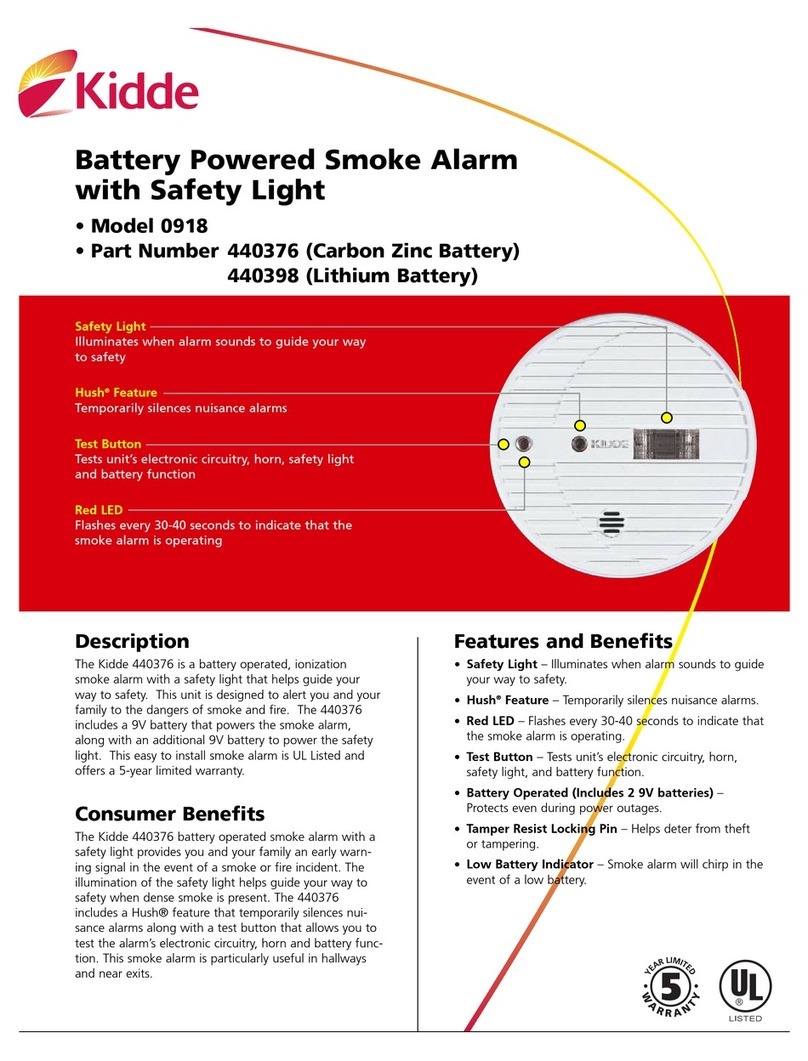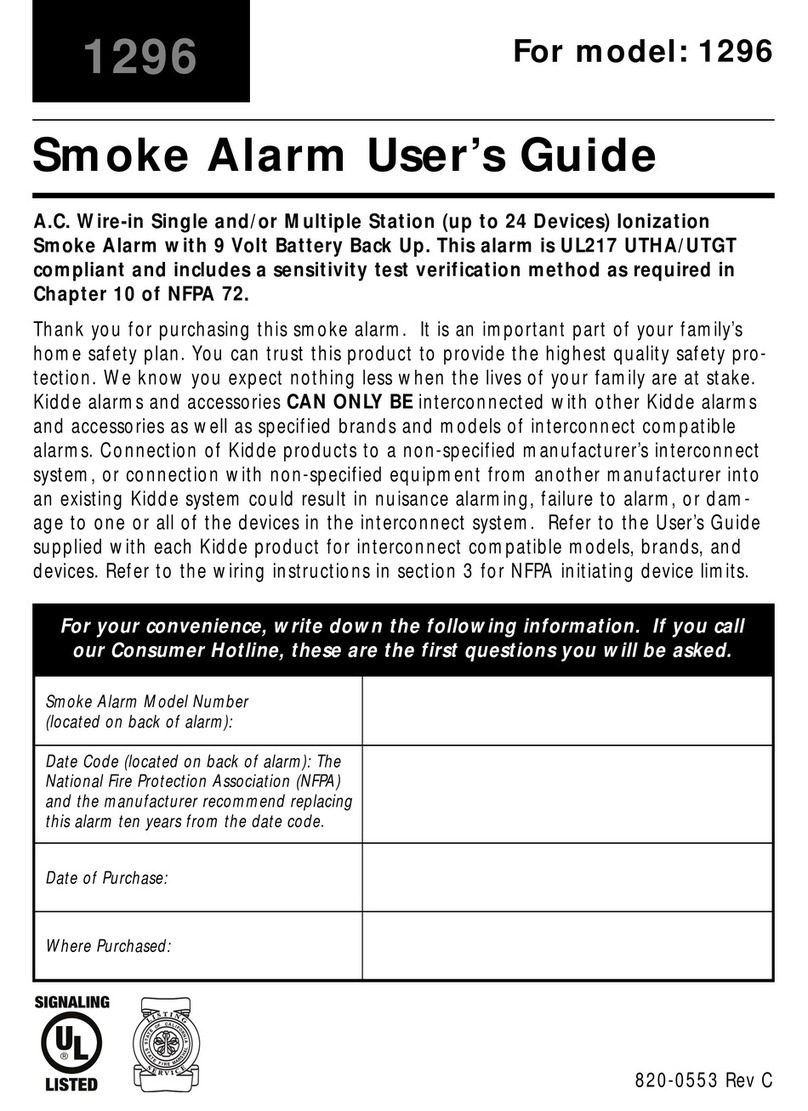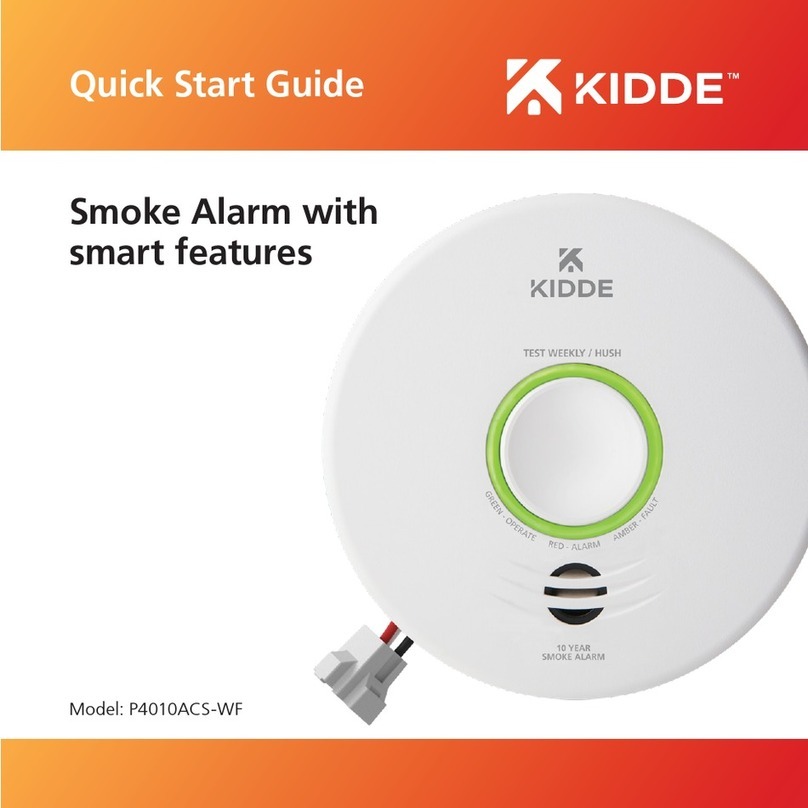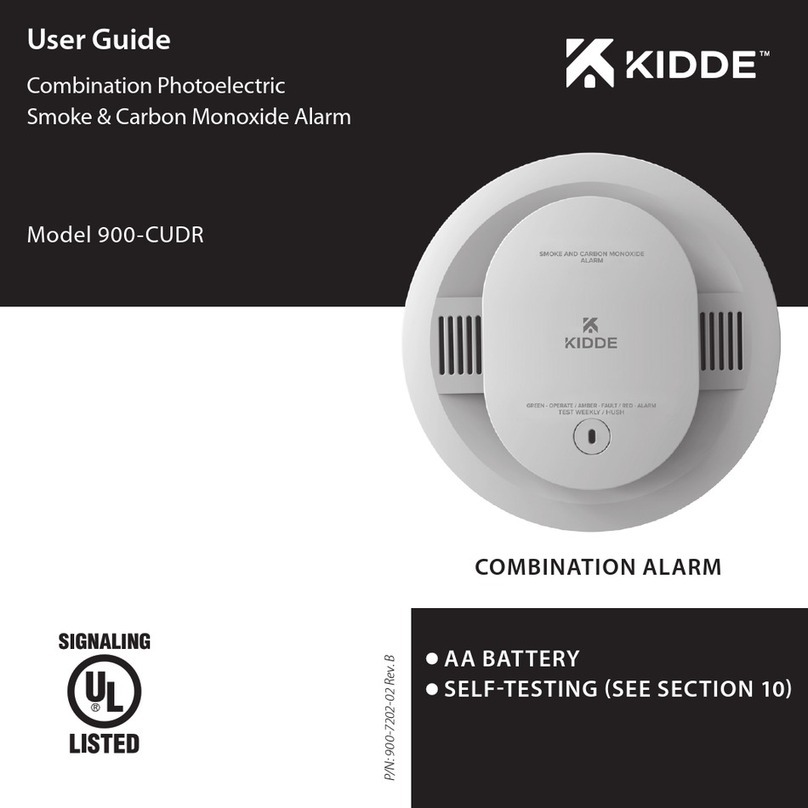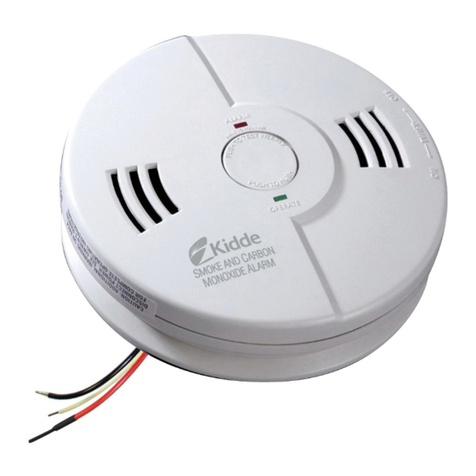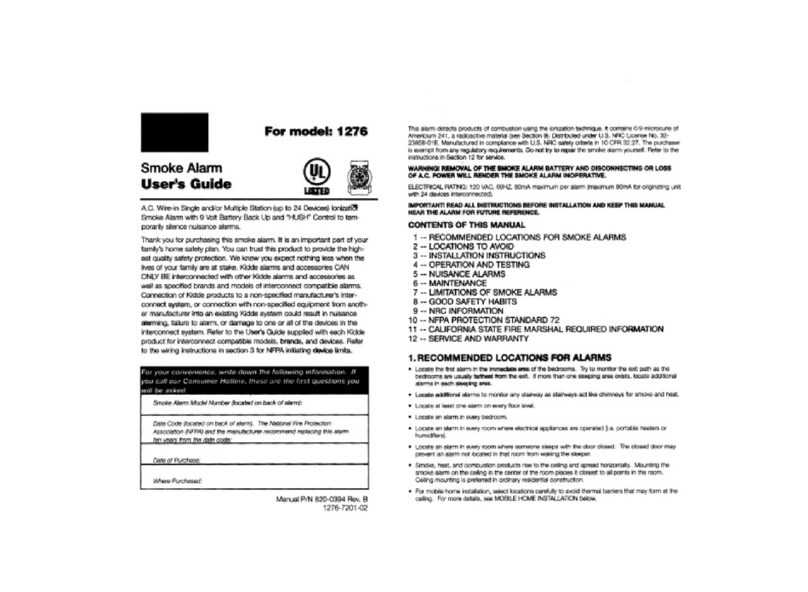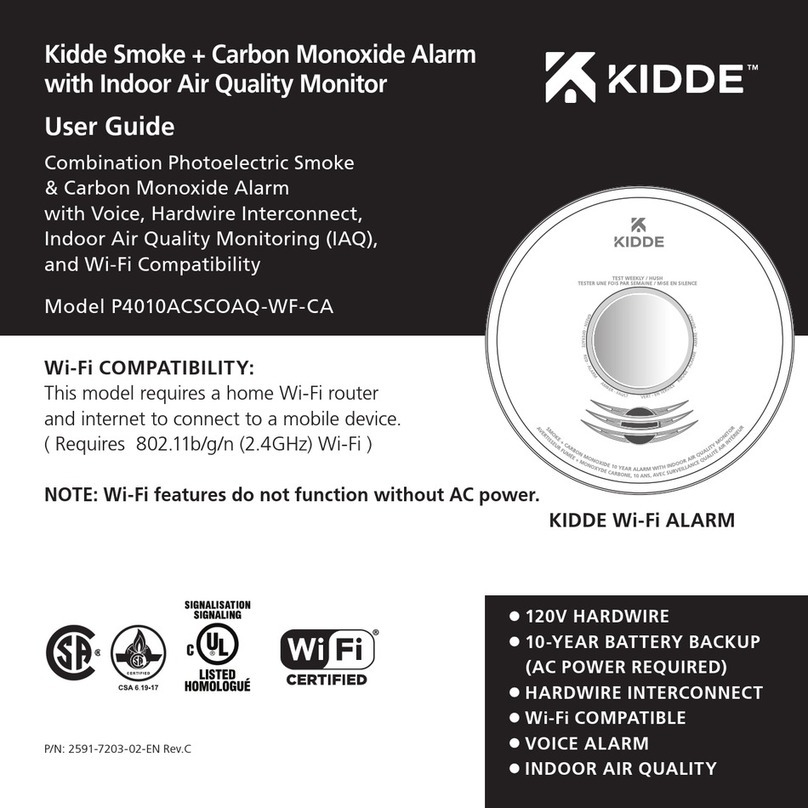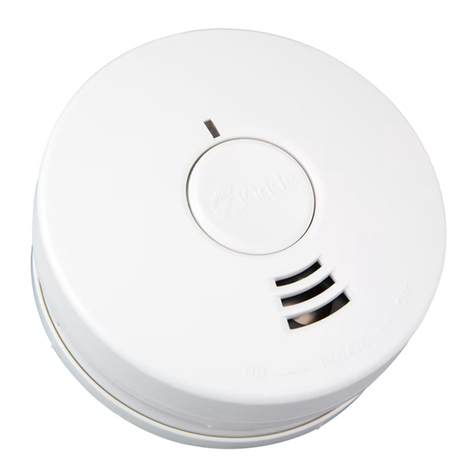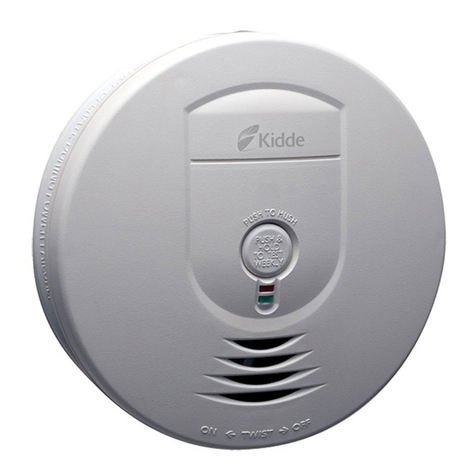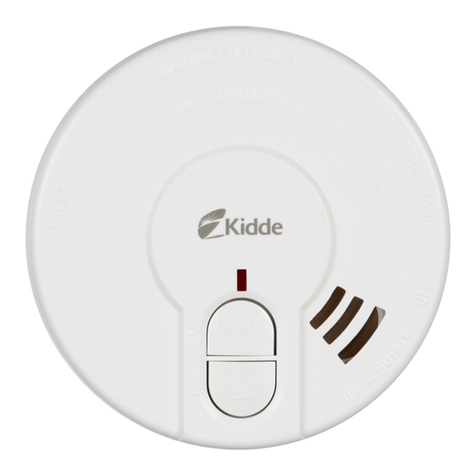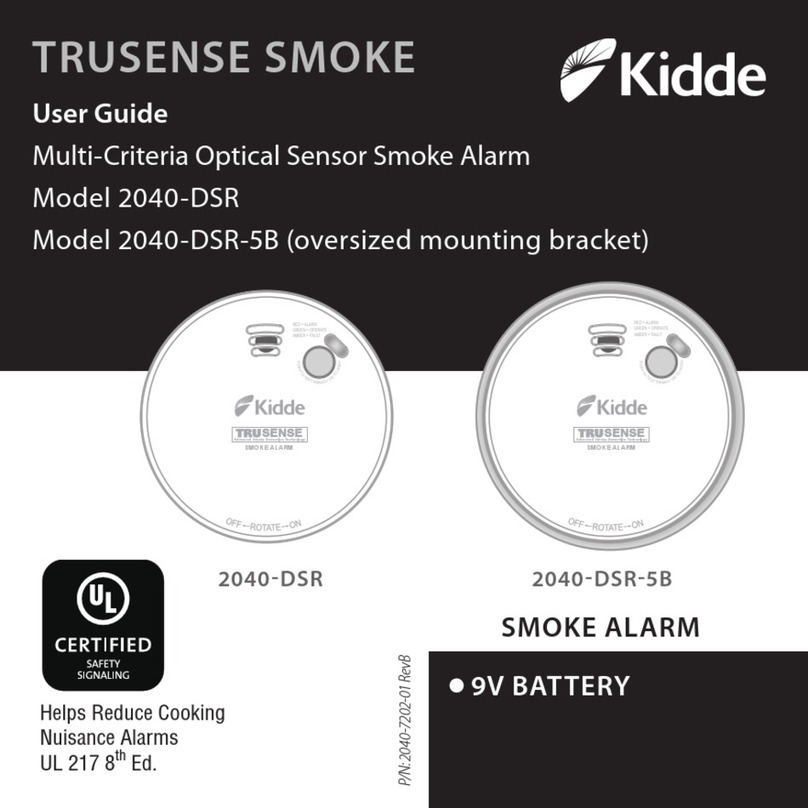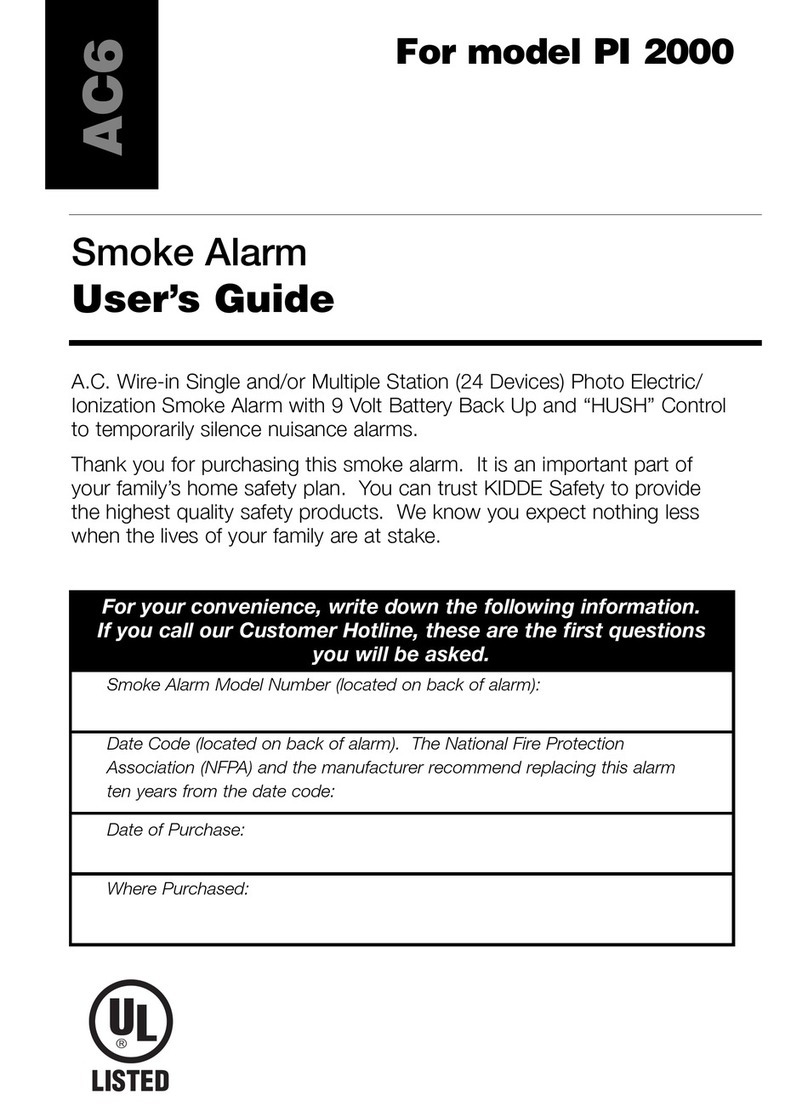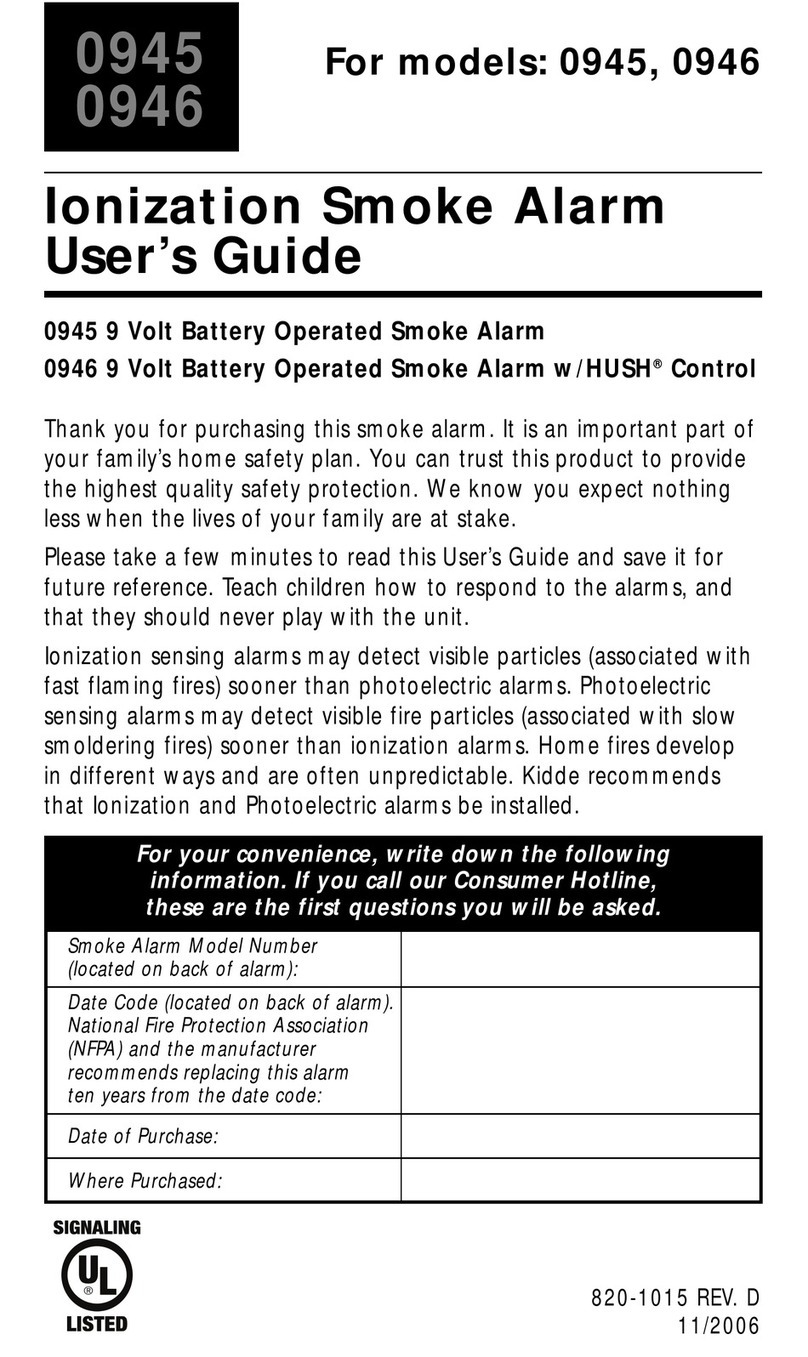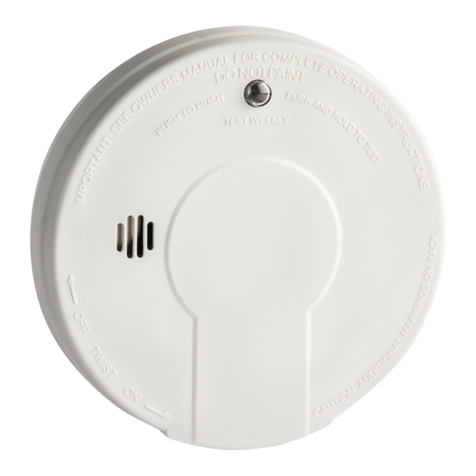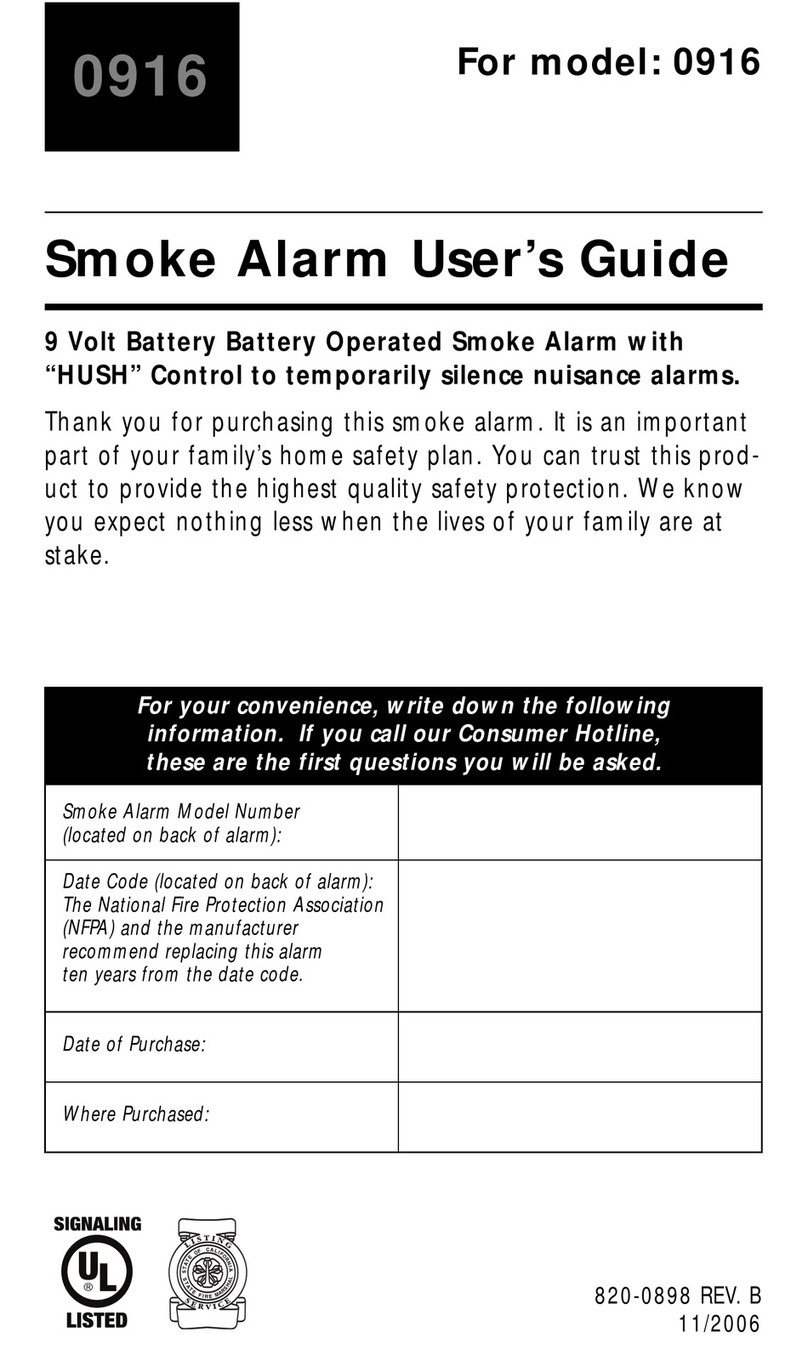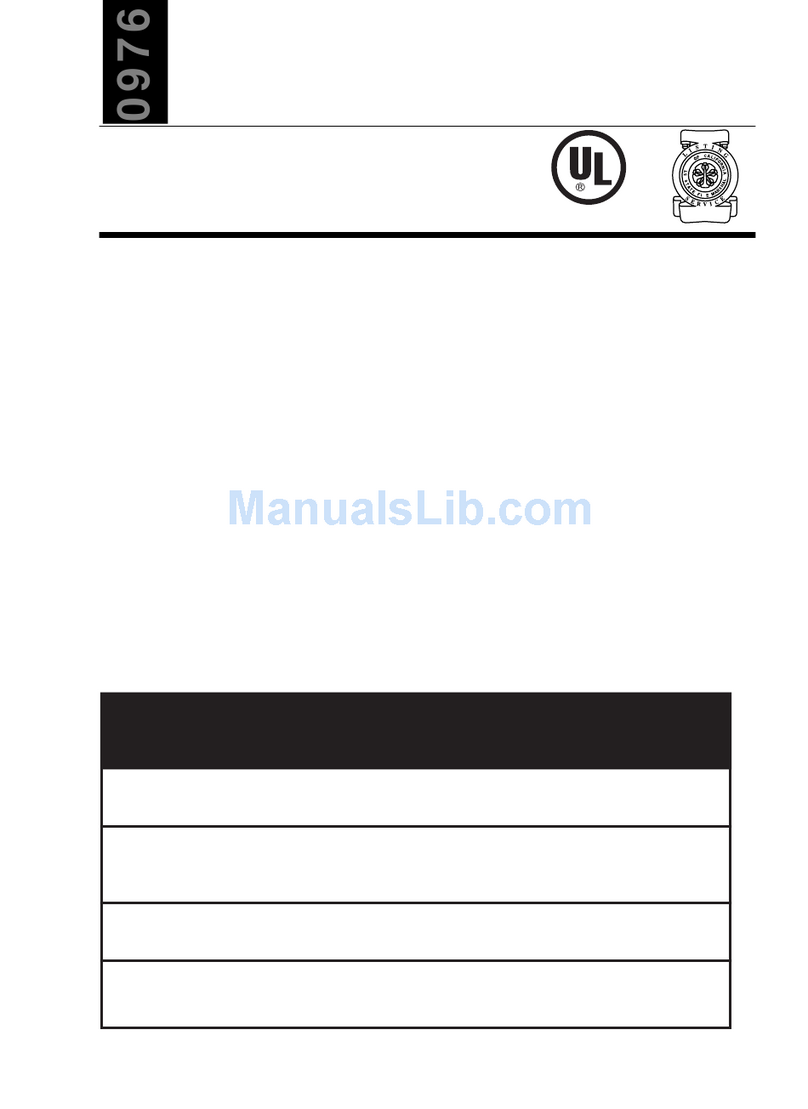•Practice a fire drill at least every six months, including fire drillsat
night.Ensure that small children hear the alarm and wake when
it sounds. They must wake up in order to execute the escape
plan.Practice allowsall occupantsto test your plan before an
emergency.You may not be able to reach your children.It is
important they know what to do.
•Install and maintain fire extinguisherson every levelof the home
and in the kitchen,basement and garage.Know how to use a
fire extinguisher prior to an emergency.
•Current studieshave shown smoke alarmsmay not awaken all
sleeping individuals, and that it isthe responsibility of individuals
in the household that are capable of assisting othersto provide
assistance to those who may not be awakened by the alarm
sound,or to those who may be incapable of safely evacuating
the area unassisted.
WHATTODO WHENTHEALARMSOUNDS
•Alert small children in the home.
•
L
eave immediately by your escape plan.Every second counts, so
don’t waste time getting dressed or picking up valuables.
•In leaving,don’t open any inside door without first feeling itssur-
face.If hot,or if you see smoke seeping through cracks, don’t
open that door! Instead,use your alternate exit.If the inside of
the door iscool,place your shoulder against it,open it slightly
and be ready to slam it shut if heat and smoke rush in.
•
S
tay close to the floor if the air issmoky.Breathe shallowly through
a cloth,wet if possible.
•Once outside,go to your selected meeting place and make sure
everyone isthere.
•Call the fire department from your neighbor’shome - not from
yours!
•Don’t return to your home until the fire officialssay that it isall
right to do so.
There are situationswhere a smoke alarm may not be effective to
protect against fire asstated in the NFPA
S
tandard 72.For instance:
a
)
smoking in bed
b
)
leaving children home alone
c
)
cleaning with flammable liquids, such asgasoline
9.NRC INFORM ATION
Ionization type smoke alarmsuse a very small amount of a
radioactive element in the sensing chamber to enable detection of
visible and invisible combustion products. The radioactive element
issafely contained in the chamber and requiresno adjustmentsor
maintenance.Thissmoke alarm meetsor exceedsall government
standards. It ismanufactured and distributed under license from
the U.
S
.Nuclear
R
egulatory Commission.
10.NFPA REQUIRED PROTECTION
The NationalFire Protection Association’s
S
tandard 72 providesthe
following information:
S
moke Detection - Where required by applicable laws, codes, or
standardsfor the specified occupancy,approved single- and multi-
ple-station smoke alarmsshall be installed asfollows:
(
1
)
In all
sleeping roomsException:
S
moke alarmsshall not be required in
sleeping roomsin existing one- and two-family dwelling units.
(
2
)
Outside of each separate sleeping area,in immediate vicinity of
the sleeping rooms.
(
3
)
On each levelof the dwelling unit,includ-
ing basementsException: In existing one- and two-family dwelling
units, approved smoke alarmspowered by batteriesare permitted.
S
moke Detection - Are More
S
moke AlarmsDesirable? The
required number of smoke alarmsmight not provide reliable early
warning protection for those areasseparated by a door from the
areasprotected by the required smoke alarms. For thisreason,it is
recommended that the householder consider the use of additional
smoke alarmsfor those areasfor increased protection.The addi-
tionalareasinclude the basement,bedrooms, dining room,fur-
nace room,utility room,and hallwaysnot protected by the
required smoke alarms. The installation of the smoke alarmsin
the kitchen,attic
(
finished or unfinished
)
,or garage isnormally not
recommended,asthese locationsoccasionally experience condi-
tionsthat can result in improper operation.
Thisequipment should be installed in accordance with the
NationalFire Protection Association’s
S
tandard 72
(
NFPA,
Batterymarch Park,Quincy,MA 02269
)
.
NOTIFY YOU
R
L
OCA
L
FI
R
E DEPA
R
TMENT AND IN
S
U
R
ANCE COM-
PANY OFYOU
R
S
MOKE A
L
A
R
M IN
S
TA
LL
ATION.
